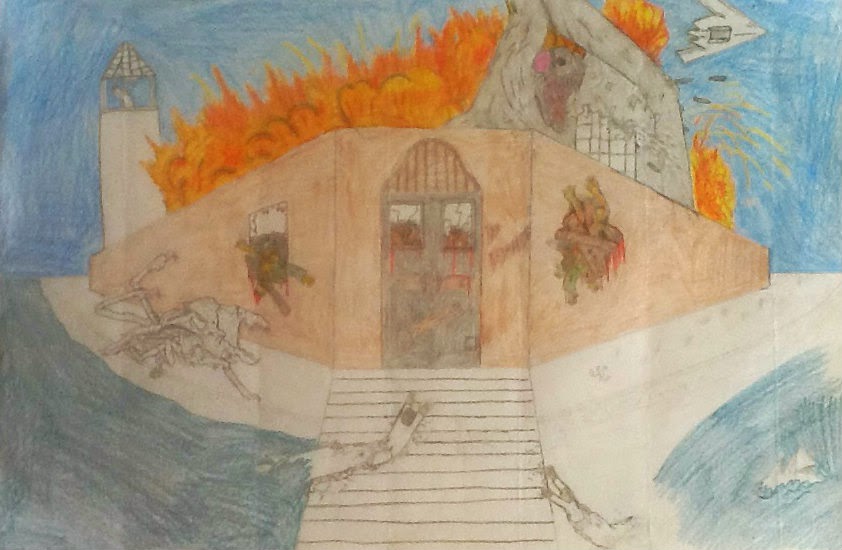Oh, and here's the bulletin board I created with these. It was titled 'Look what happens... when you eat a box of crayons!!!'
Sunday, November 30, 2014
Portraits- With A Colorful Twist
Friday, November 28, 2014
How To Make An 'Egyptian' Mummy
Ancient Egypt is one subject that the kids always love to learn about in art class. Who can't resist a good mummy story!
The whole history of pyramids, pharaohs and mummies can be quite fascinating. I have a few different versions of making mummies, but the following is one my favorites.
We start out reviewing the whole history of the pyramids, the ancient Egyptian religious system, with their gods and goddesses, and the mummification process. After that we're ready to make our mummies.
The kids then get an overview of Egyptian hieroglyphics system. They have to write a word at least 5 letters long, using the hieroglyph symbols, that they put on somewhere their mummy. Either horizontal or vertical.
They then have them make up 3 'hieroglyph' symbols of their own, that they add to their mummy. The Egyptian Hieroglyphs symbols were representation of objects important to Egyptian life- things such as water, loafs of bread, grass reeds, etc. The kid- designed 'hieroglyph' symbols should be objects important to their life.

Other things they are required to add to their mummies are- some kind of a crown, a few strands of jeweled necklaces and jewels in their hair. The mummies needed this to make sure they didn't lose their social status in the afterlife. So they were buried in their 'bling'.
Below are a couple of mummies that kids designed in their 'own' style. Some times I let the kids do that if they're really creative and have a vision of how it will be differentiated. Once in a while you gotta let the kids go their own way! Use some discretion and give 'em a little leeway. I think these came out really nice.
What do you think of our Egyptian mummies? Would they work in you art room? I'd love to hear what you think about them. You can comment below.
Saturday, November 22, 2014
How To Draw 2 Point Perspective Castles
 |
| A work in progress |
What do you think of this 2 point perspective project? Do you have a castle project that works in your art class? I'd like to hear about it in the comments below.
Subscribe to:
Comments (Atom)

















